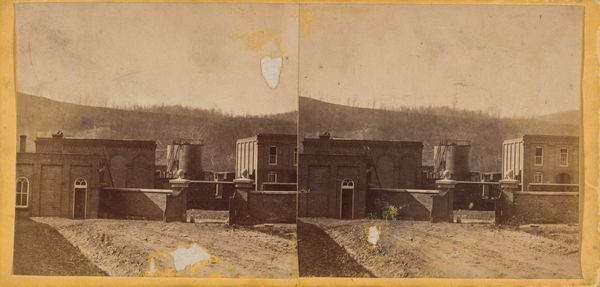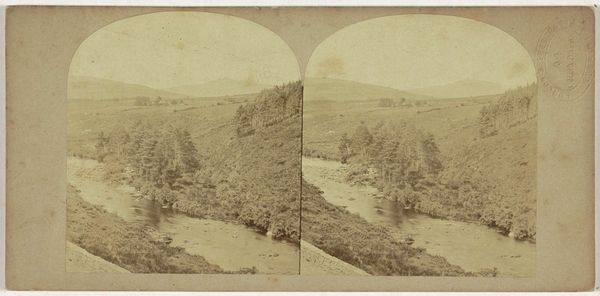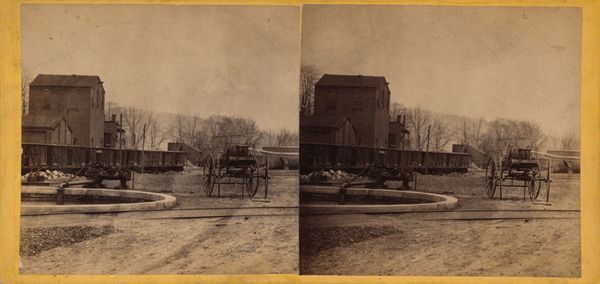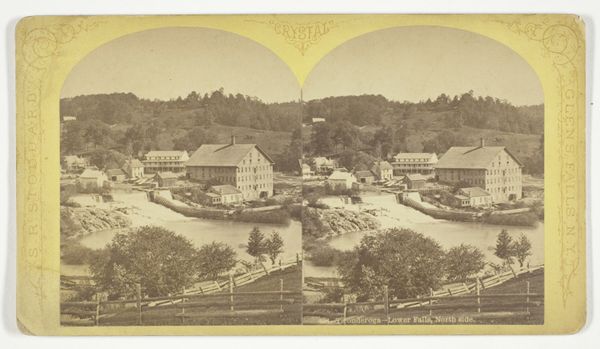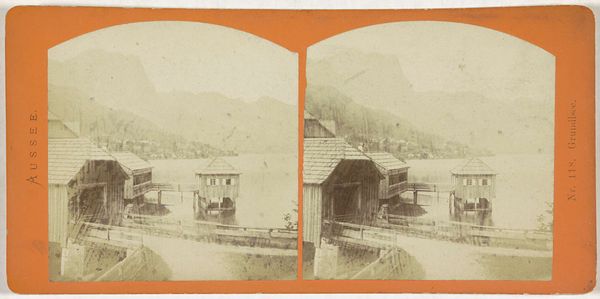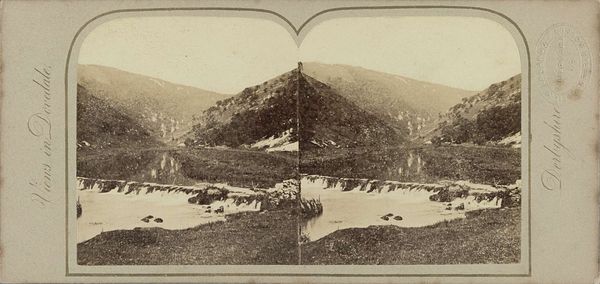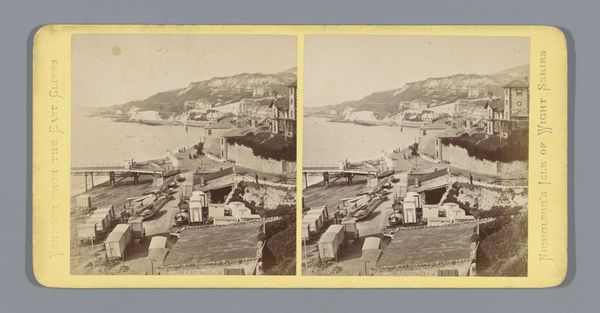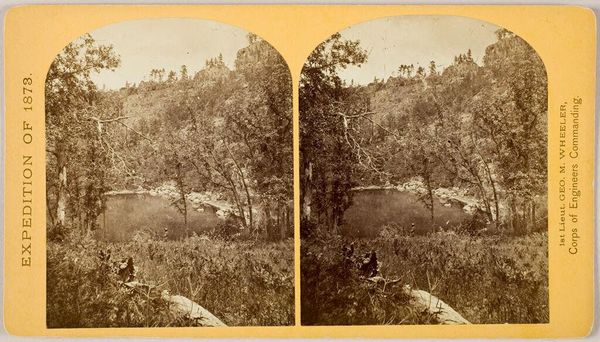
silver, print, photography
#
toned paper
#
16_19th-century
#
silver
#
egg art
#
ink paper printed
# print
#
old engraving style
#
photography
#
coloured pencil
#
carved
#
men
#
united-states
#
watercolour bleed
#
watercolour illustration
#
pencil art
#
watercolor
Dimensions: 7.6 × 7.7 cm (each image); 8.2 × 17 cm (card)
Copyright: Public Domain
Editor: This is "Bridge Over the Ramapo at Greenwood," a photograph dating back to the 1860s, credited to Anthony and Company. It's fascinating how the photographer captured this seemingly ordinary scene – children on a bridge, a horse and cart nearby, and smoke from the industry of the area rising in the background. What stands out to you when you look at this work? Curator: For me, it's about the relationship between the means of production and the presentation of idyllic rural life. Consider the materiality of this stereograph – the silver printing-out paper, the precise photographic chemistry required. It speaks volumes about the industrial processes that underpinned its creation and mass distribution. We’re looking at a manufactured image. Editor: So, the photograph itself is a product of the same era it depicts, but maybe obscures. I see what you mean about mass distribution-- the composition seems crafted for a stereoscope, creating that popular 3-D effect for viewers at home. Does that intent impact the interpretation? Curator: Absolutely. This wasn't just about documentation; it was about consumption. These images were commodities, feeding a desire for curated experiences of nature. Note the choice of subject - not rugged wilderness, but a domesticated landscape shaped by industry, made picturesque, and then packaged for a middle-class audience. Even the bridge is not rough-hewn logs but planed planks showing material advancement. Consider that versus the work of rural labor in view. Editor: It's interesting to consider that disconnect between the representation and the reality. Viewing it through a materialist lens opens up the layers of social and economic context embedded in the image itself. Curator: Precisely. We are compelled to consider what aspects of rural life are intentionally chosen to appear in the photograph while others are omitted. We are meant to consume this image for more than just its mere viewing, we must consider its construction and purpose. Editor: That's definitely given me a fresh perspective on this photograph! I’m left thinking about how everyday images carry so much social and economic weight.
Comments
No comments
Be the first to comment and join the conversation on the ultimate creative platform.

